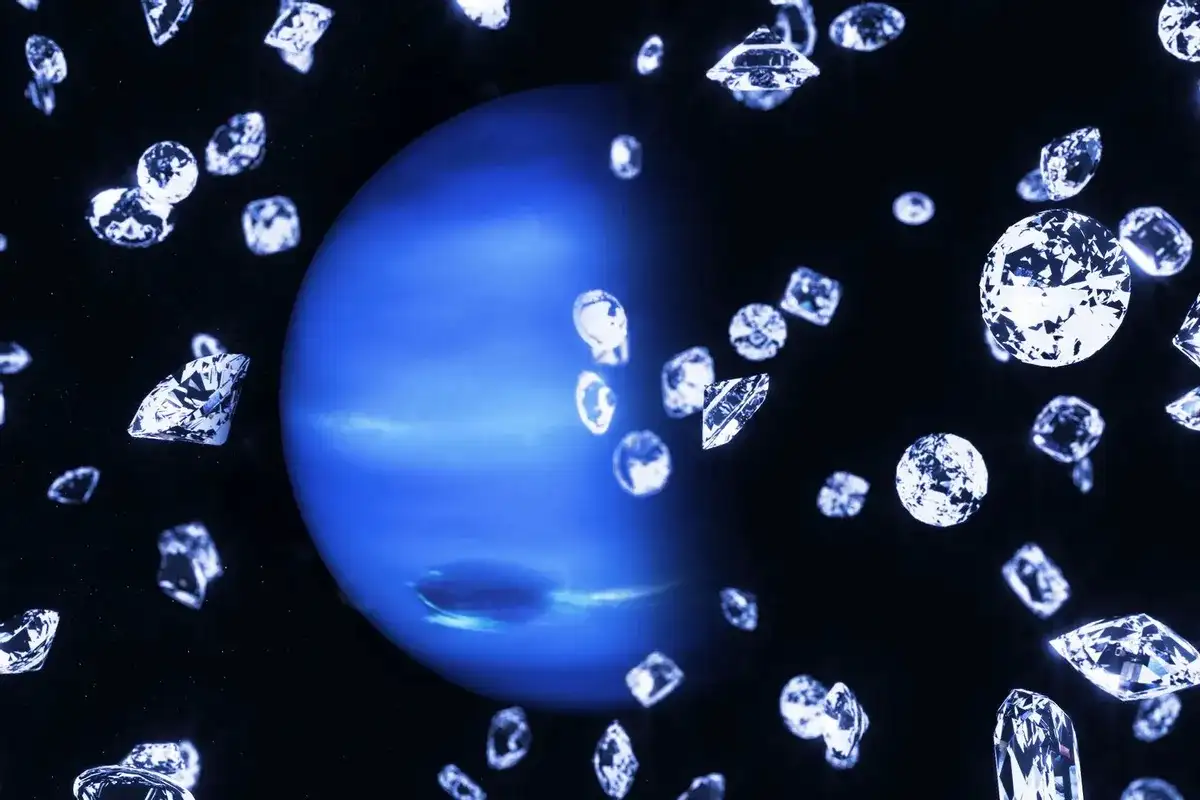Diamond rain, seen on Uranus and Neptune, may be more prevalent than imagined.
Carbon molecules form crystals in the atmosphere of gas giant planets like Uranus and Neptune due to severe temperatures and pressures.

These circumstances break down hydrocarbons like methane, releasing carbon. Diamond particles form when these atoms bond.
New laboratory tests reveal that diamond production requires lower temperatures and pressures than previously anticipated. This suggests diamond showers on mini-Neptunes, which are common outside our solar system.
SLAC National Accelerator Laboratory physicist Siegfried Glenzer remarked, “This discovery not only expands our understanding of ice giants in our solar system, but also helps us better understand similar exoplanets out there.”
The scientists tracked diamond production from hydrocarbon compounds at ultra-high pressure using a powerful X-FEL laser.
This unusual setup allowed them to watch more precisely than prior tests, revealing a surprise: diamond rain may not require high pressures and temperatures.
This suggests planets may form diamonds at shallower depths than thought.
Small diamond particles will tug gas and ice as they descend, directly affecting the planet’s magnetic field in ways we never imagined. Thus, these discoveries may help explain several Uranus and Neptune magnetic field riddles.
The ice giants’ magnetic fields are not symmetrical like Earth’s, suggesting they didn’t arise from its core. Diamond rain, which affects internal flows, may be the key.
“Future research will delve deeper into the role of diamond rain in generating magnetic fields,” said SLAC physicist Mungo Frost.















